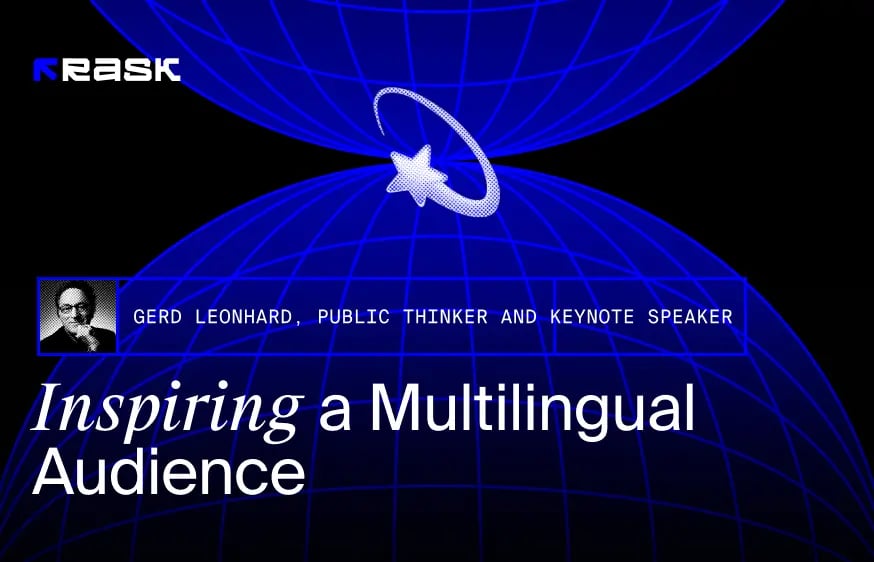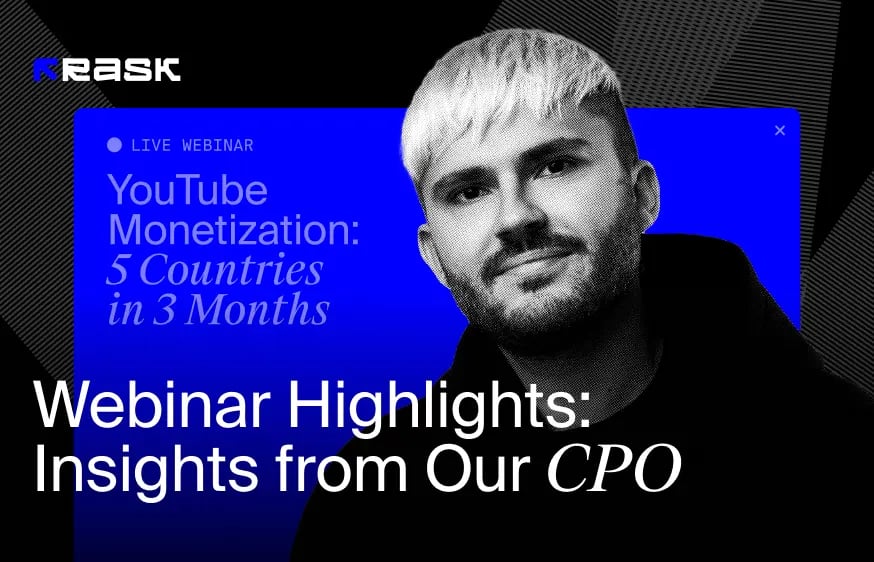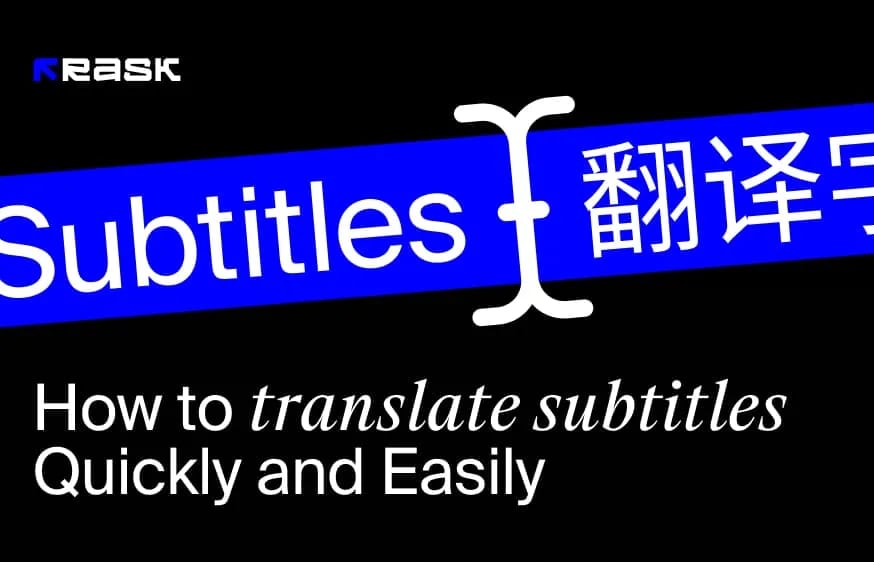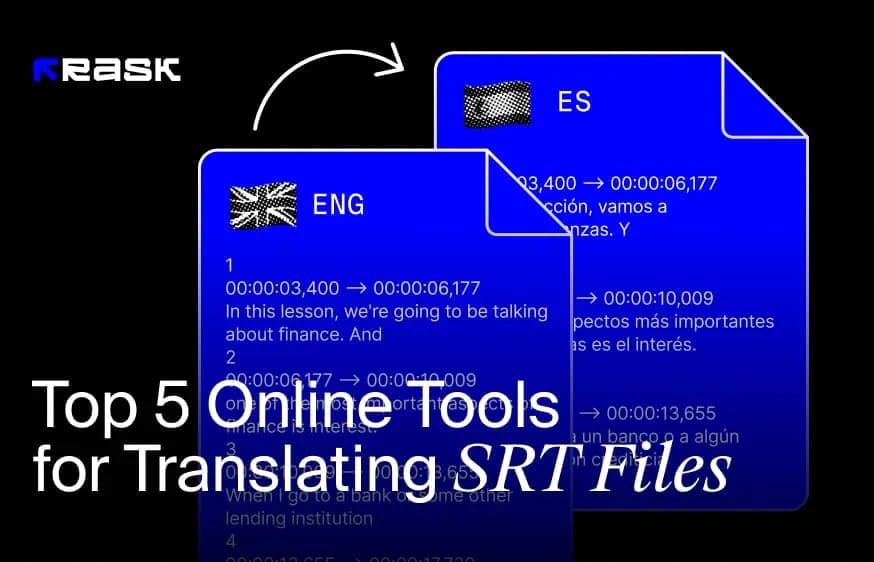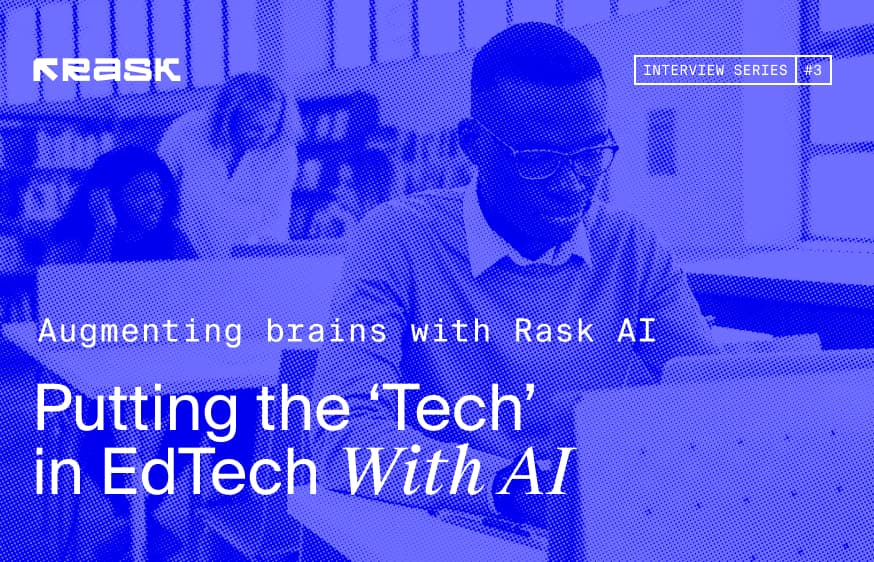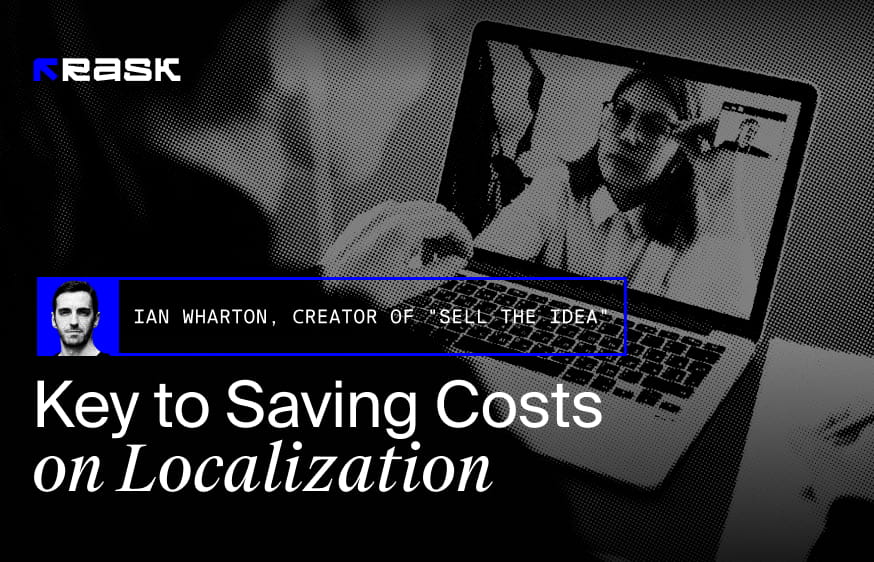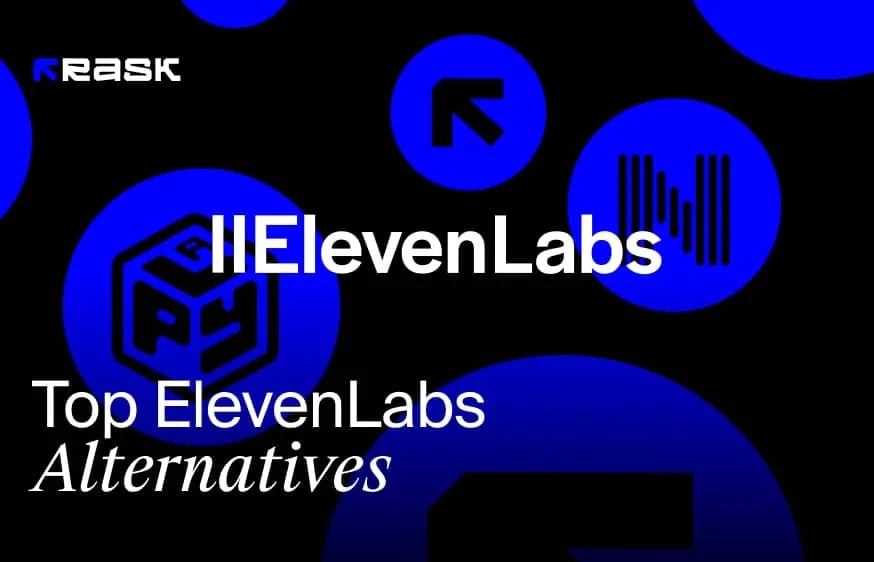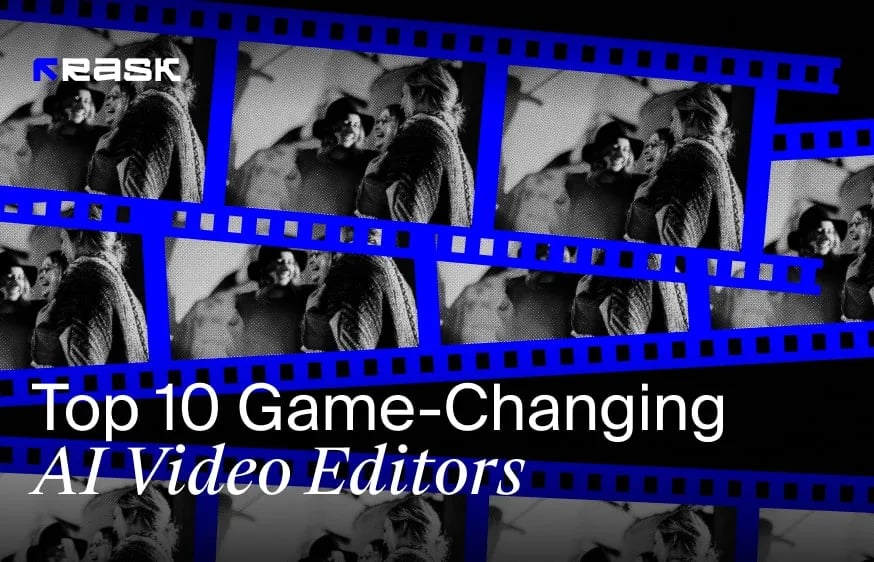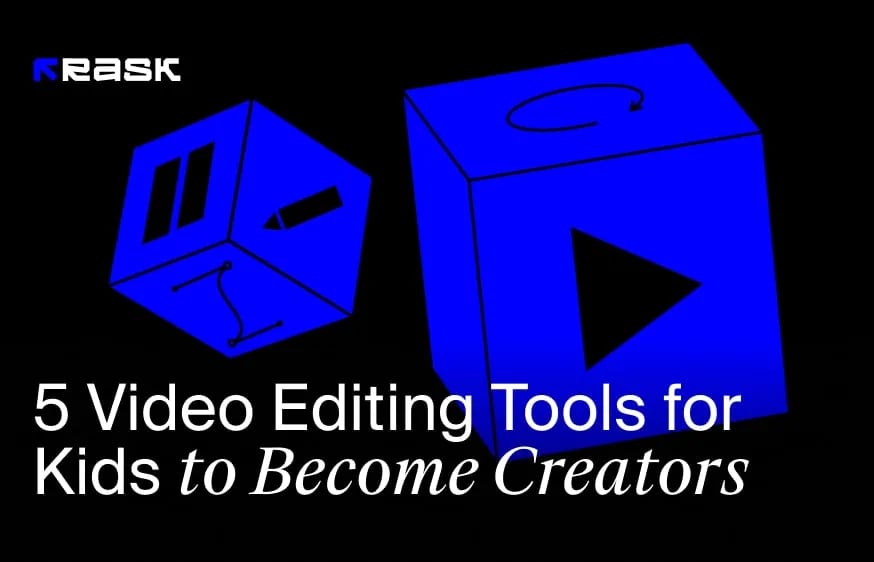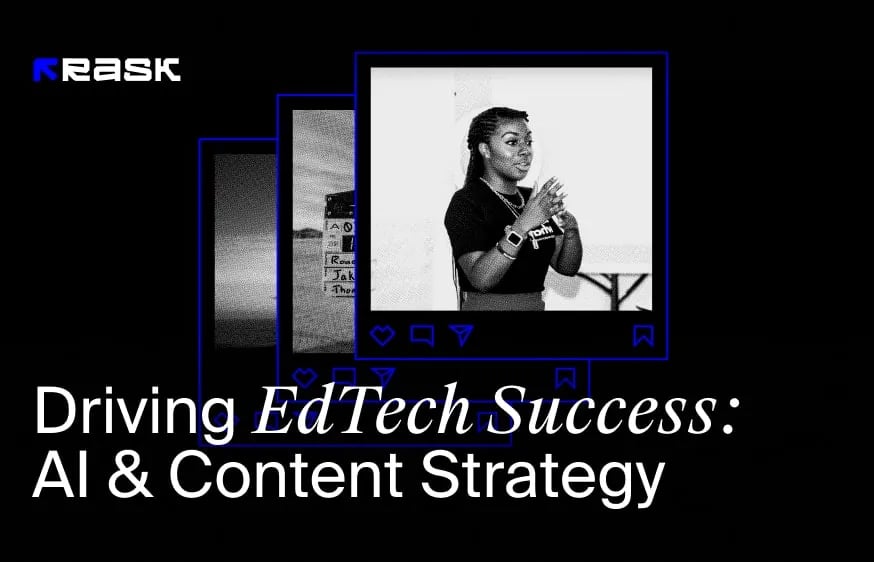91% of businesses use video as a marketing tool. 61% of consumers look forward to watching videos while selecting a brand. That indicates that video is more important than ever before. However, as the demand for video content grows exponentially, so does the need for innovation and cost-saving in its creation. And here enters the AI. In this article, we’ll discuss how AI-powered video editing API is used for dynamic content creation now. You’ll find out the best industry examples and discover the opportunities of the Rask AI video editing API and video creating tool.
How Does AI Work in Video Production?
AI has transformed the world of video production. It helps creators automate tasks, boosts their imagination, and provides award winning free opportunities. To create videos and reach for this effect, two pillars play a crucial role: Machine Learning (ML) and Computer Vision.
Machine Learning
This is the brain of AI. It helps algorithms to recognize patterns and improve performance without programming. In the context of video production, ML automates video template editing, identifies scenes, images, and video templates suggests soundtracks to easily create video templates. With AI support, video template video editors can streamline and automate the workflow and increase the quality of the videos.
Computer Vision
It acts as a programming language for AI's programming language for visual perception. Computer Vision makes machines interpret visual data sources as information. This technology finds utility in facial recognition, object tracking, and scene detection. AI-editing API optimizes render efficiency and reshapes the scene editing process.
It is important to note that AI's evolution in the world of filmmaking has progressed from rudimentary tools for footage to creating advanced systems that auto-generate short free-form videos in seconds without render, apply visual effects, and raise the overall production value of videos.
How AI Helps in Short Video Content Creation?
AI brings also advancements for social media producers, not only filmmakers. This is how it might be helpful to support them.
- AI Editing Tools and API. They can create templates, automate processes, and offer resources to create videos for various purposes. These solutions feature low-code/no-code usability and provide users control over the video creation process through drag-and-drop editing interfaces.
- Diverse Capabilities. AI creates videos from text and images without the need for shooting, uploading custom assets, and generating automatic subtitles and transcripts. Also, it brings options for video editing and social media videos in multiple languages. Forget about traditional render, just make a couple of clicks with the mouse.
- Enterprise Features. Many AI video generation tools and APIs offer enterprise features. Video embeds, integrations, AI 3D avatars, images, and audio synthesis support the business approach during the video-making workflow.
- User-Friendly Interfaces. AI solutions and API create user-friendly interfaces for clips, making it easier to move around audio and visual elements without a time-consuming render procedure. They simplify the communication practice that was previously considered the domain of expert creatives.
- Analyze. Several platforms such as YouTube or TikTok provide AI tools to analyze data, understand trends, and predict audience preferences. Also, the solution may serve as a data source by itself. There’s no more need for short-form content creators to watch tons of videos trying to extract some insights.
In the world of short video content creation, AI has become an important asset that might even be considered a copilot.
What are the benefits of using AI in video creation?
Using AI in audiovisual experience creation helps with:
Improving efficiency
AI-powered tools automate and expedite various aspects of the creative process, including keyword research, topic suggestions, and content optimization. This frees up time to focus on other crucial tasks such as content strategy and distribution.
Boosting personalization
Cloud based AI analyzes user data and behavioral patterns with machine learning algorithms to generate and create personalized content and templates for developers to create complex videos, templates, and images. This capability assists creators in producing targeted and captivating dynamic templates and videos to create something that resonates with their viewers.
Maintaining consistency of the elements
AI cloud API automates proofreading and editing processes, being the guarantor of globally consistent content across different programming languages and regions. It’s important when producing several videos in the content plan with an openshot video editor.
Multilingual approach
AI cloud API generates captions for images and videos in multiple languages, facilitating global audience reach. With it, there's an opportunity to easily create video templates and videos with simultaneous multilingual translation support, making it priceless for targeting different countries.
Cost-effectiveness
Technology brings a budget-friendly option for creators, allowing them to create their own templates and edit videos and clips cheaply. Also, it boosts music template testing and implementation, audio mixing, captions creation, watermarks removal from footage videos, key frame animation production, and brand colors suggestion.
Increasing customer ER
AI-powered music and video solutions provide a variety of motion effects, enhancing creators' ability to create and connect with diverse audiences while respecting their cultural codes.
Overall, integrating AI cloud API into video content creation serves as an assistant, enabling creators to produce videos more efficiently.
How AI Limitates Video Editing Capabilities?
Despite its strengths, AI in video production has certain limitations that its users should consider.
Reliance on preceding data
AI's ability to create original content and edit videos may be limited by its connection with expired data elements. It may lead to videos that feel boring, repetitive, and lacking in personality. Especially, it's crucial for the first social media videos. As a consequence, this can discourage the target audience and push them away.
Insufficiency in providing insight-based solutions
While AI video template editor automates many aspects of video production, it cannot replace the collaborative efforts of humans. The creative conception of videos involves communication and input from different team members, and AI video template editor and templates cannot replicate the value of interconnections and brainstorming.
Excessive dependence on automation.
Relying too heavily on it can create a lack of diversity in the final product. When it comes to seriate short video production for social media, it may result in animated video template kits and monotonous and uninspired videos. That’s why combining automation with human creativity is essential for successful content.
Issues in understanding emotions
Our emotions are complex, and unfortunately, cloud AI lacks the depth of understanding required to get them. For cloud AI, capturing the intended tone or sentiment of a video remains challenging. Consequently, there is a potential for misunderstandings to arise. Therefore, AI cloud API in video content production does not exclude the participation of creators. AI video editor should be used in conjunction with human input to overcome its limitations and create videos that resonate with millions.
What Are the Best Practices of Using AI in Video Creation?
Rask AI
RaskAI is an AI-powered tool designed for video localization and dubbing. It utilizes AI technologies like "Text-to-Voice" and "Voice Cloning" to generate natural-sounding voice overs for videos. With RaskAI, users can quickly localize and translate their videos into multiple languages. It breaks language barriers and conveys messages through automated video adaptation. Rask AI is already used for creating game narratives, character dialogues, education videos etc.
D-ID, and Runway
These companies offer their own AI cloud API video editing tools that are already being used by millions of creators. They have new features that can transform photos, edit images, and render them into video presenters, create their own templates, animate faces, and provide a full list of motion design options. Runway has a full video editing feature and even introduced the first-ever AI-generated short-film contest, which you can explore to understand how the AI video editor and generation tool works.
McDonald's
The brand has also utilized AI in its video advertising. For example, during the Lunar New Year push, they launched an AI-powered ad. The brand used AI to implement neural radiance field technology in video to create a render of a 3D scene. Furthermore, McDonald's has even produced some commercials fully generated with AI. While they are still far from ideal, they demonstrate the potential for AI to contribute to the creation of unique video content.
Coca Cola
Another major brand mastering AI is Coca-Cola. Recently, they released an AI-powered campaign called "Masterpiece." The video incorporates a blend of live-action shots, digital effects, and AI-generated animation technology. Viewers are taken on a journey alongside a Coca-Cola bottle as it traverses through well-known paintings and sculptures from around the world. The key frame animations of the paintings was produced with the assistance of AI.
Which AI Software is Convenient for Video Editing Tasks?
1. Rask API
API is a bridge between software applications for better communication and data cross-sharing. Video editing APIs work by the same model, for example, an Amazon AWS based on OpenShot Cloud API. Video API enables developers to automate video creation, analysis, management, editing, and delivery. Using a programming language, they authenticate their applications and obtain an API key. Then, they make requests to the API servers, specifying the desired editing actions and template parameters. The editing API then processes these requests and returns the edited video or provides a link to download the modified video file. Rask API has the same goal and working principle as Amazon AWS, and it serves to create facilitated content translation. Users just have to upload the video to Rask AI, and after that, they get the result. Developers can integrate Rask API into desktop applications or directly into their mobile app.
Rask API's main features for users and developers are:
- Voice Clone. It means that Rask video editing API duplicates the speaker's voice from an original video and uses it for voiceover in translated video. This feature is available now in 28 languages.
- Multi-speakers. Rask video editing API supports translation with one or several voices, depending on the number of speakers in the video.
- Uploading SRT. If the creator has the transcript or translation template, video editing API presents an “Upload SRT” option to achieve more accuracy in dubbing and video editing.
Explore API magic in two scenarios!
- Upload Video or Audio. Get the translated video effortlessly.
- Use SRT Files for trustworthy translation and enjoy the translated video with pinpoint accuracy.
How Much Does the Rask API Cost?
- Monthly Business Plan: $560/month (includes 500 minutes each month)
- Yearly Business Plan: $500/month (includes 500 minutes each month)
- Enterprise Plan (Please contact our sales team).
We can’t wait to see how Rask AI transforms your content creation process.
2. Adobe Premiere Pro
The cloud AI features in Premiere Pro are a cloud solution that speeds up transcription, background audio tracks, mixing, creation, editing, color correction, audio adjustments, transitions, captions creation, and workflow improvement for delivery. With support for these cloud AIs, users can create and edit cuts fast with prompt editing support, apply color corrections with smart auto color features, create and edit images, and utilize morph cuts for quick transitions.
3. Kapwing
Kapwing's free AI video editor provides automatic subtitles, transitions, background audio tracks, watermarks removal, cleaning, silence removal, voice-over generation, and text-based video editing features. It also includes an AI video generator that lets anyone create new video just by typing a short text description.
There are numerous free AI software tools available for video editing tasks. These free, tools not only scale, improve, automate, integrate, and scale the full video editing feature set and process but also introduce new brand possibilities in content generation from scratch, offering efficiency, scale, speed, scale, creative template designs, and accessibility.
How does Rask Video API Work?
Rask video editing API offers two scenarios for video translation and voiceover.
- Users can create original video clips, upload them, and download the translated version without any opportunity to further edit videos or images for editing complex videos. Rask video editing API pipeline automatically translates the video, embedding it inseparably within the video clip.
- Users can create the original video and upload it along with a verified transcription or translation in SRT format. This option leads to a more accurate translation. As a result, they obtain voiceovers of a better quality.
To start using Rask video editing cloud video API, you have first create the account and choose the pricing plan. There are three of them, and they differ in covering the developer's needs. The Monthly Business Plan for the Rask video editing cloud API starts from $560 per month and includes a minimum of 500 minutes each month. The Yearly Business Plan for the Rask video editing cloud based cloud video and cloud API starts from $500 per month with the same monthly minutes. For enterprise-level plans, users can contact the Rask AI sales team through their website at https://www.rask.ai/api
Why is the Rask API the Best Choice?
When it comes to video editing, the Rask API looks like the best choice for several reasons. Firstly, Developers can easily integrate Rask video editing API into the service. As the first API in the field of AI dubbing, Rask API has a simple restful interface and provides the technology that sets it apart from others. With the opportunity to generate the API key directly from the Rask account, the process becomes more efficient. Moreover, the flexibility of the Rask API allows creators to automate their workflow and spend their minutes both within the Rask main product and the Rask API itself. This means creators can make the most out of their subscription and utilize it across different platforms.
Final thoughts
The evolution of AI-powered video editing has significantly impacted the video editing industry. AI-based video editing APIs can editor a wide array of benefits for content creators, including reworking a pipeline optimization, visual quick template implementation, content research, and data analysis. Rask video editing API is the best AI video editor for creators seeking advanced video and editing features and tools to enhance the quality and productivity of video creation. As the first-ever video editing API used in AI dubbing, it opens up new opportunities to reach a global audience and save costs. Rask video editing API represents several plans affordable for each need and budget.
FAQ
A Video Editing API, or Application Programming Interface, is a tool for developers that acts as a cloud bridge, allowing different software applications to communicate and interface with video editing capabilities. Many video APIs also include a way to retrieve analytics about the videos and live streams of the show viewers.
Users can confess to AI cloud editing tools and ease automation of video production tasks. There’s a wide range of cloud solutions, differing by brand and capacities. For example, the Rask API video editor saves time while translating videos, enhances productivity, and helps users to create engaging content templates and videos more efficiently.
.webp)
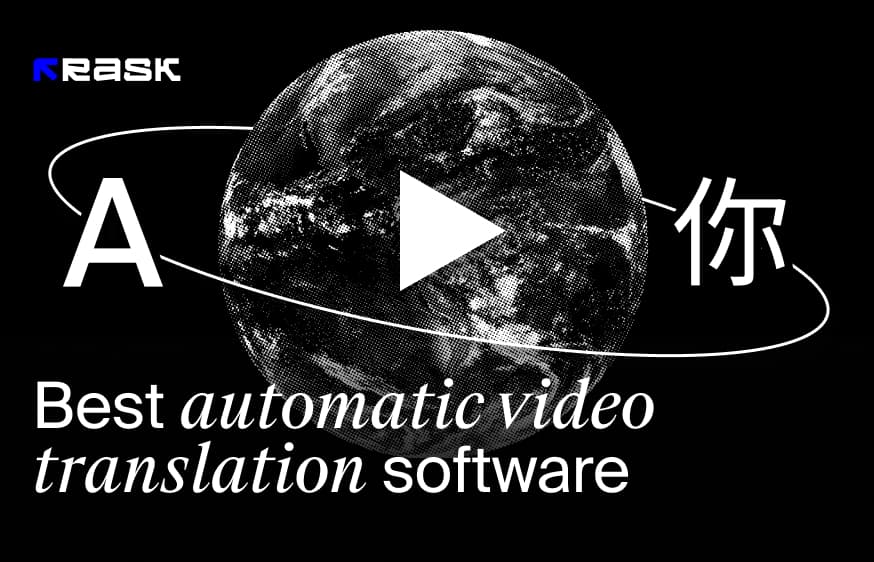
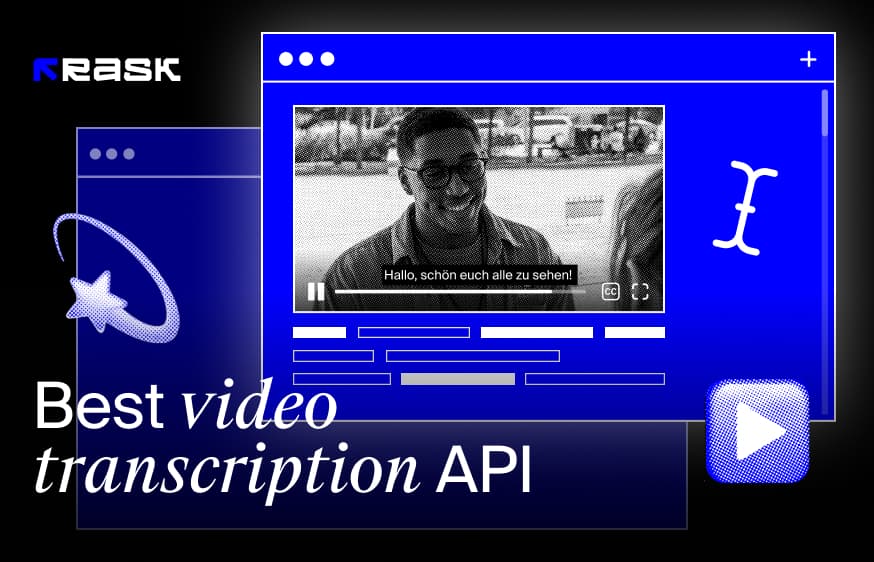
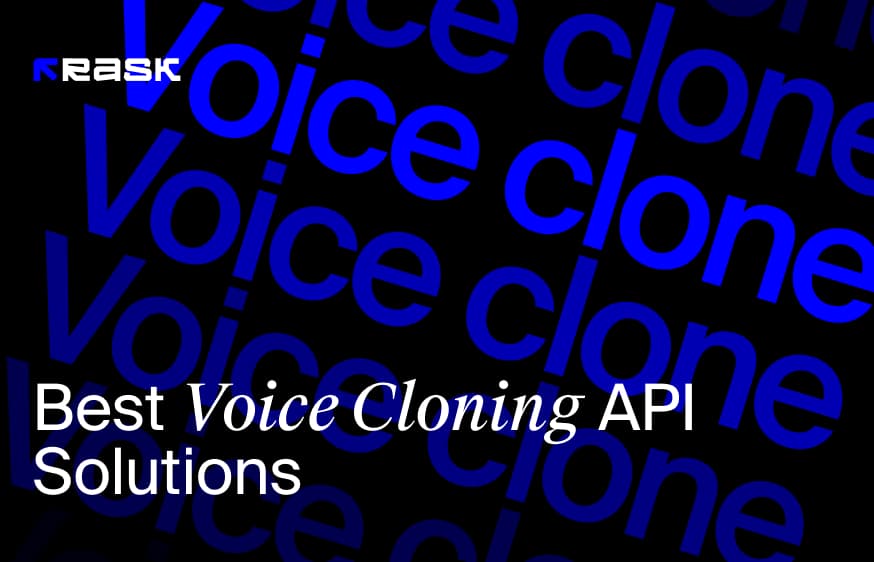
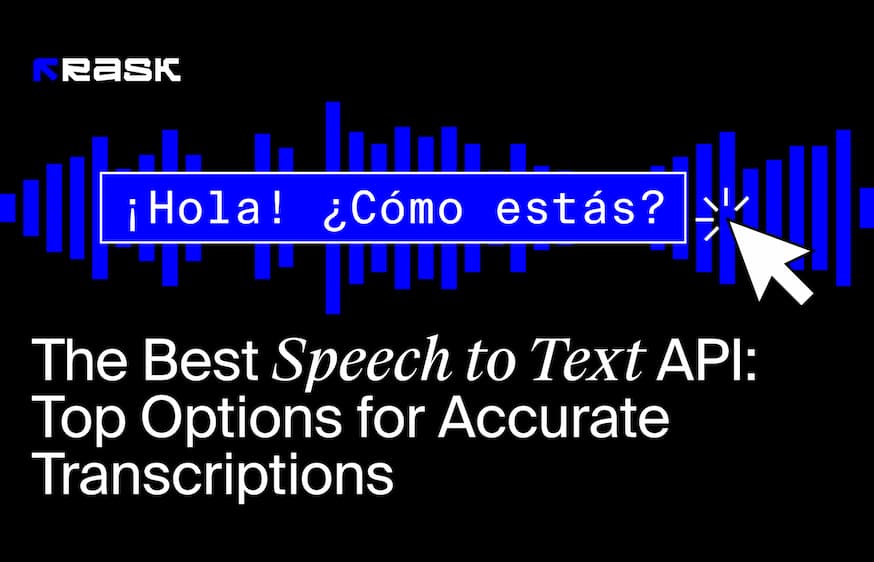

.jpg)
.webp)
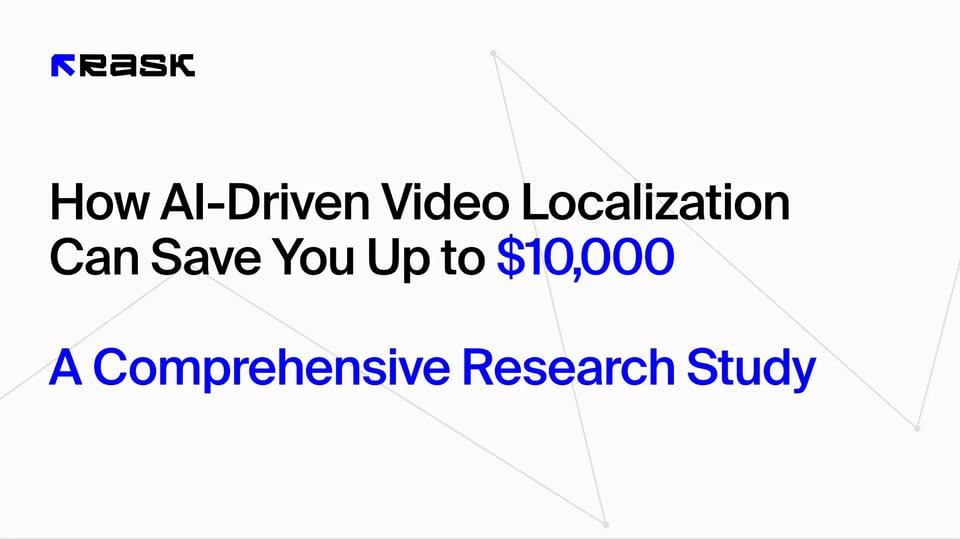
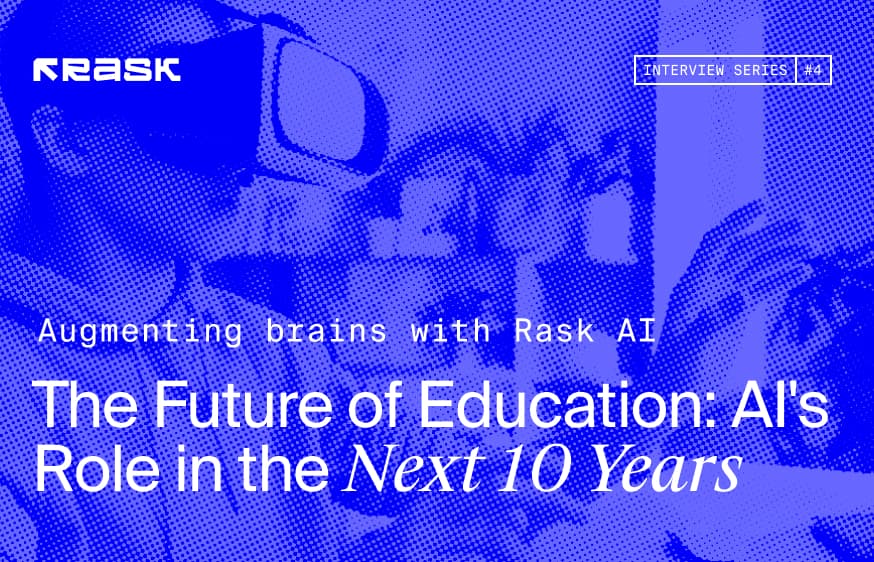
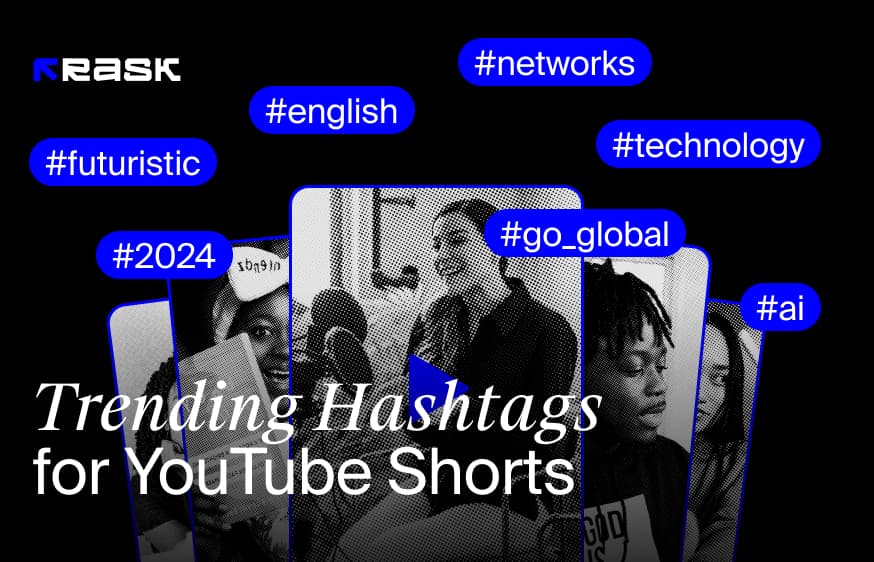
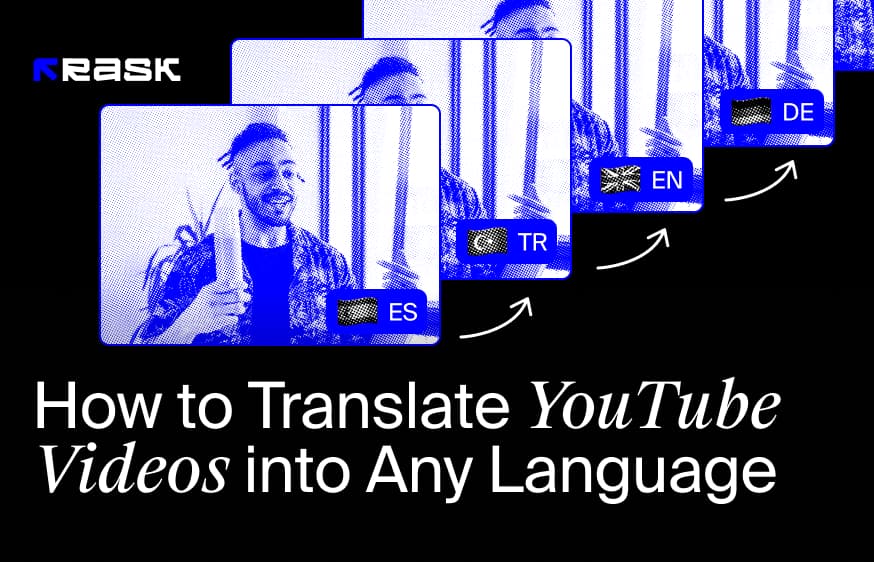
![8 Best Video Translator App for Content Creators [of 2024]](https://rask.ai/cdn-cgi/image/width=960,format=auto,fit=scale-down/https://cdn.prod.website-files.com/63d41bc99674c403e4a7cef7/6668a3dcd3175bd1d1c73c81_Best%20video%20translator%20apps%20cover.webp)
![Best AI Dubbing Software for Video Localization [of 2024]](https://rask.ai/cdn-cgi/image/width=960,format=auto,fit=scale-down/https://cdn.prod.website-files.com/63d41bc99674c403e4a7cef7/66685014f68137eb05c89c16_Cover.webp)
